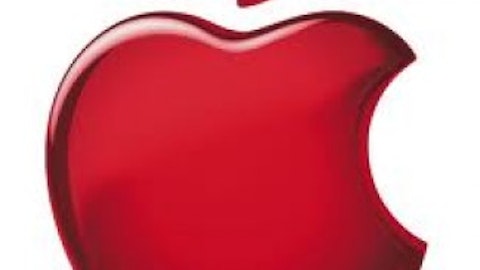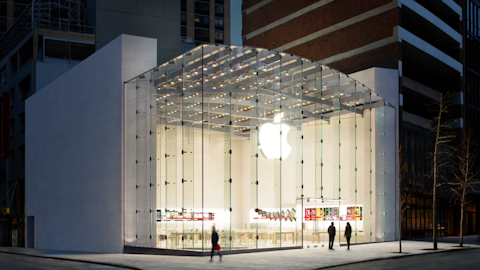AAPLRevenue Quarterly data by YCharts
The parallel rise in cash could also be attributed to this trend and was quickly outpacing its usefulness as a reserve. By increasing its buyback up to $60 billion, Apple can theoretically reduce anywhere between 10% to 15% of the company’s outstanding shares. But Apple’s historic buyback will ultimately do much more than merely reduce the amount of shares on the market. The consequential effect is that it will also increase the earnings-per-share and reduce cash outflow from dividends by a similar percentage as well.
With the current yield of 2.65% as of May 6, Apple continues to pay one of the highest yields for a tech company. Establishing a trend of dividend growth, this gives additional reason for investor support for those looking to diversify within dividend growth companies. The latest bond offer by Apple also remains indicative of the company’s ability to leverage its cash in order to attract favorable financing. With such an advantage in regards to efficient cash use, Apple may be settling into its new role as a growing income investment.
Conclusion
It largely seems that no matter how one looks at it, Apple appears to be settling in with a change of appearance. The company’s stellar rise may have subsided, but so has the strategy in returning value to shareholders. Barring the introduction of an unknown factor, the best thing investors should consider is whether the company still fits the criteria he or she is looking for in the company as an investment.
While it remains more than possible for Apple to shock the world again with ongoing innovation, one has to wager whether such unanticipated growth can justify the valuation already baked into the existing share price. Now trading at roughly 10 times some of the company’s highest earnings, Apple appears fairly valued in light of a weakening display of product releases. On the other hand, the company’s efficient raise of cash and its willingness to distribute it back to investors also appears to be signaling that its focus is to become more shareholder friendly.
Therefore, whether you find yourself more bearish or bullish on Apple may simply come down to your strategy of how you’re incorporating it into your portfolio. Those seeking value and income may find Apple attractive in regards to the ongoing buyback and rising yield. Yet those seeking growth may not necessarily find it here in Apple unless it comes about and proves itself once again.
The article The Two Ways To Now View Apple originally appeared on Fool.com is written by Prov2120.
Copyright © 1995 – 2013 The Motley Fool, LLC. All rights reserved. The Motley Fool has a disclosure policy.




